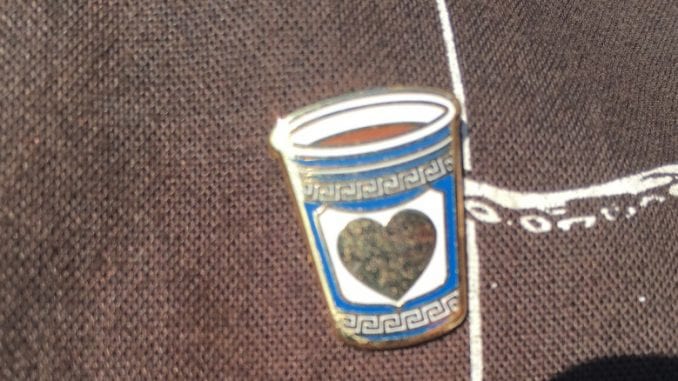
With the release of her book, New York City: A Caffeinated History, Meister leads patrons through a history of New York coffee with a walking tour of the city’s most iconic coffee locales.
BY ASHLEY RODRIGUEZ
BARISTA MAGAZINE ONLINE
Photos by Maciej Kasperowicz
The history of coffee in New York is deep and rich in stories. A few weeks ago, Erin Meister (who goes by just Meister), on the heels of the release of New York City: A Caffeinated History, took New York City coffee pros and enthusiasts alike on a walking tour of the city. Meister took the group to a number of New York institutions that are outlined and referenced in the book, and explained their significance to the New York City coffee scene in both past and present.
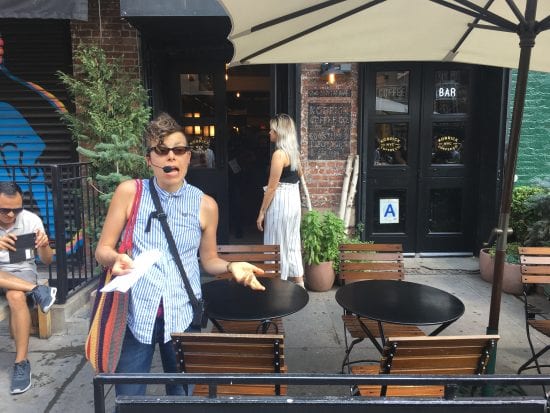
The two-hour tour started at Porto Rico, a coffee importing company in the West Village. Peter Longo, the current owner, grew up and was born in the building that houses their original storefront, which started as a bread bakery and became a coffee business when Angelo, Peter’s father, convinced Patsy Albanese, then the owner of Porto Rico, to sell her business. Angelo then moved it to its current location—the building Peter was born and raised in at 201 Bleecker.
Meister led patrons through the West Village, where many iconic and historic coffee businesses began. The second stop on the tour was Caffe Reggio, owned by Dominic Parisi, which claims to have one of the first espresso machines in New York City, since 1927. (The city’s first machine goes to Barbetta, which claims they had an espresso machine installed in 1911.) It’s at Cafe Reggio where journalist Clementine Paddleford, in 1945, captured one of the earliest descriptions of the cappuccino: “Cappuccino is a cup of espresso with steam-heated milk floating lazily over the surface, and the delicate bouquet is just the merest pinch of ground cinnamon. This, according to Mr. Parisi, ‘the ladies like very much.’”
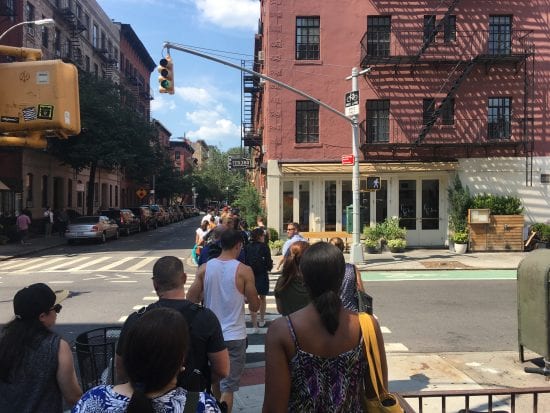
The West Village is a hub of coffee activity due to the area becoming the home of the beatnik movement in the 1960s, with influential writers, poets, and thinkers flooding the neighborhood and exchanging ideas in coffee shops. Meister talked about this as the tour moved through the neighborhood, stopping at Washington Square to talk about the first female coffee trader, Alice Foote MacDougall. Jenna Gotthelf, one of the patrons on the tour, described Alice as a righteous businesswoman who pioneered cafe culture by opening some of the city’s first coffee shops. Alice was also responsible for introducing NYC to the ever-so-popular coffee-and-waffle combination. “My grandpa lived in the city and was involved in coffee trading in the mid-1900s, so a big personal takeaway was thinking about how the sites we saw may have crossed his path,” she shared.
The tour took a modern turn as Meister led the group to Joe Coffee, one of the first specialty cafes to come to New York City. Joe was started by Jonathan Rubinstein, who was previously a talent agent; he would work shifts next to his sister, Gabrielle, and their parents, while humorist Amy Sedaris made and sold cupcakes. Joe, considered one of the ‘big four’ in early specialty coffee in NYC (alongside Cafe Grumpy, Gimme! Coffee, and Ninth Street Espresso), began with a plan of opening five stores in the city, and has now expanded to 17 between New York and Philadelphia, with more projects on the way in collaboration with the Union Square Hospitality Group.
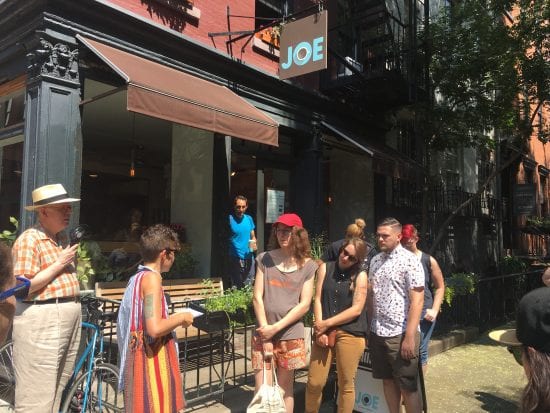
Joe first opened as a retail location and started roasting in 2009, and Meister steered the tour’s attention to a business that followed a different model, Kobrick Coffee. Kobrick has been roasting for generations, and recently opened their first brick-and-mortar cafe in the West Village on Ninth Avenue. The aesthetic of the new cafe harkens back to the company’s beginnings in the 1920s, employing a speakeasy vibe, which Meister describes as “a perfect/old new marriage.”
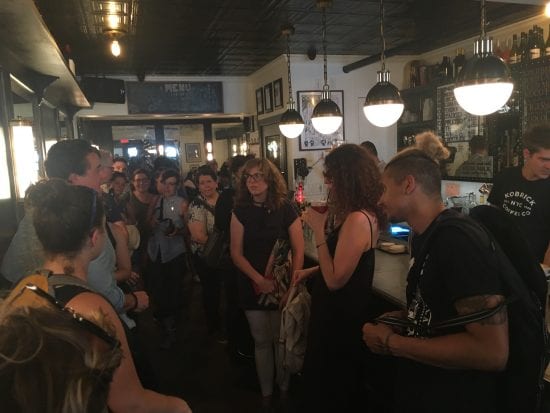
As Meister talked about the modern specialty movement in New York, the tour turned toward Ninth Street Espresso, the first true specialty coffee shop in New York City. Ken Nye, the owner, opened for business in 2002, and as Meister describes, “It was the ‘no’ shop—no sugar, no cream, no espresso on ice, no food. Just good, solid coffee and espresso served as simply as possible.” Many cite Ninth Street as the inspiration for their own coffee shops and businesses, including Gavin Compton, founder of Variety Coffee in Brooklyn. As the tour wrapped up, patrons were led to a third of the big four coffee companies, Cafe Grumpy, which started as a coffee shop in a mostly Russian and Polish neighborhood in Brooklyn. Now Grumpy has eight stores, including one in Miami, and was featured prominently in the show Girls.
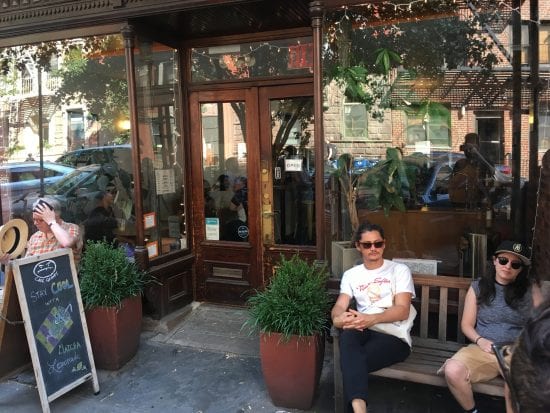
Meister is a endless bank of knowledge, and she moved effortlessly throughout the tour. “The NYC coffee walking tour was a sweet experience,” Jenna shared. “Meister has a way with words and is a captivating speaker, so naturally her curation of historic New York City coffee snippets made for a thoughtful and engaging walking tour. If this were a Yelp review, I’d give it all the stars in the galaxy. It would be cool to see this happen again!”

